One Year Later – Evaluating the Pond Planting
Rooted Wisdom: Growing Native Plants with Enrique Rodriguez
Enrique Rodriguez is the Production Foreman at Midwest Natural Garden. He has been with the Midwest Companies since 1999. This article was compiled from insights and production practices shared by Enrique.
Last summer, Midwest Groundcovers’ President and Chairman, Christa Orum-Keller, asked Enrique to take on the challenge of designing and installing a native planting around the retention pond adjacent to the company’s main office. This endeavor would not only enhance the aesthetics of the location but also harness the power of native plants to manage water runoff. Enrique’s design aimed to strike a balance between functionality and beauty, all while maintaining an unobstructed view of the pond by utilizing plants with a low profile. In September 2022, the transformation of the area surrounding the pond began with the installation of a significant number of plugs from Natural Garden Natives®. Eleven months post-planting, Enrique reviewed what worked, what didn’t, and where improvements could be made.
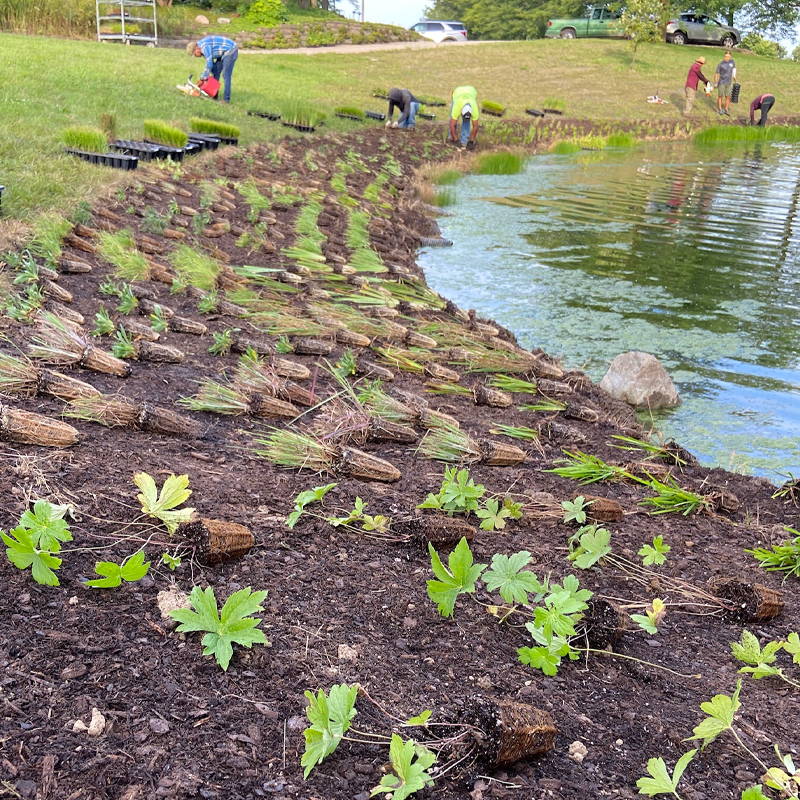
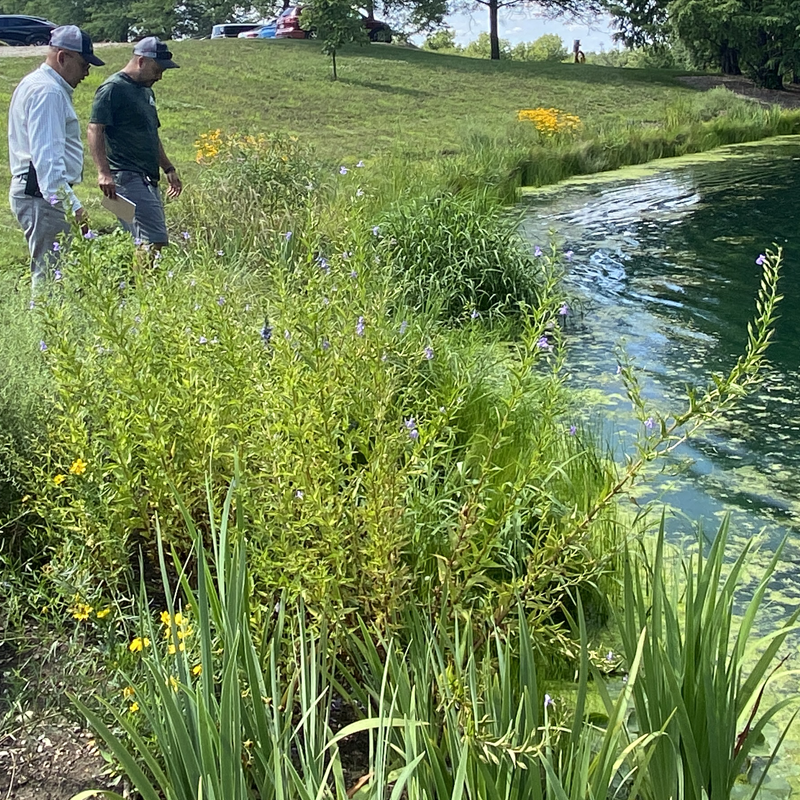
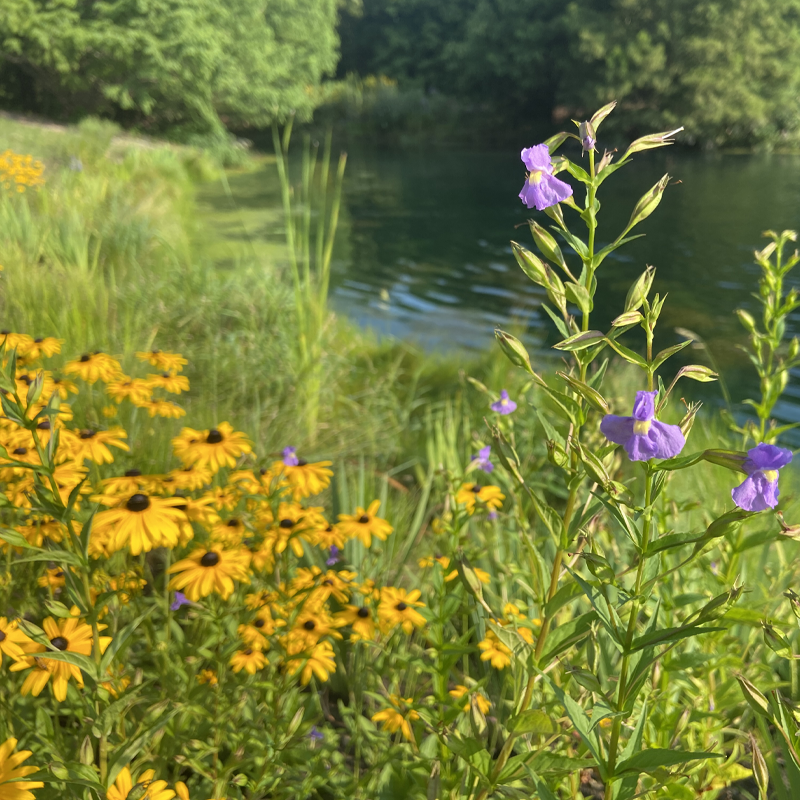
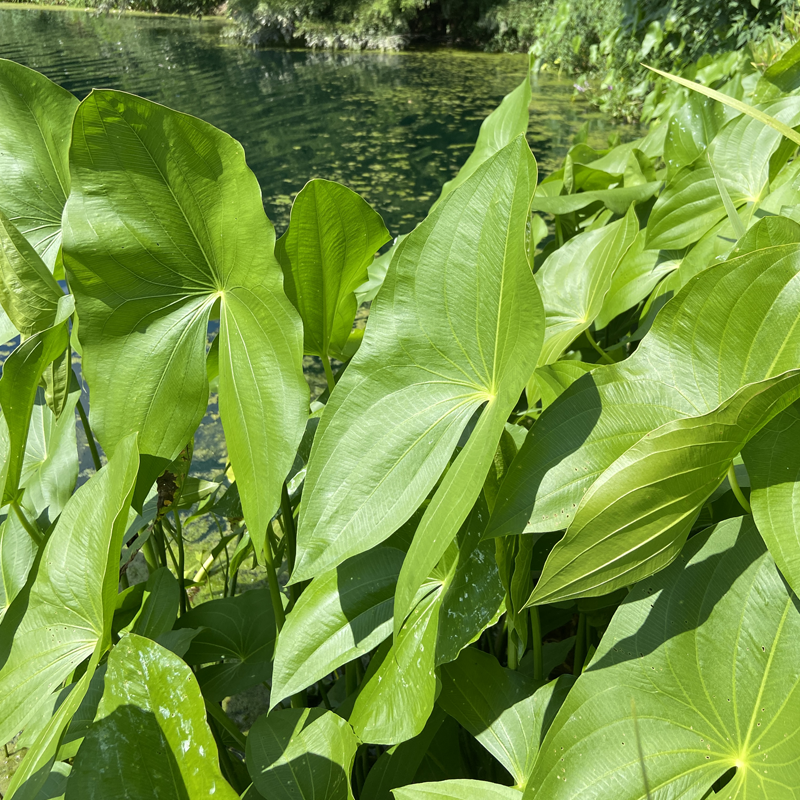
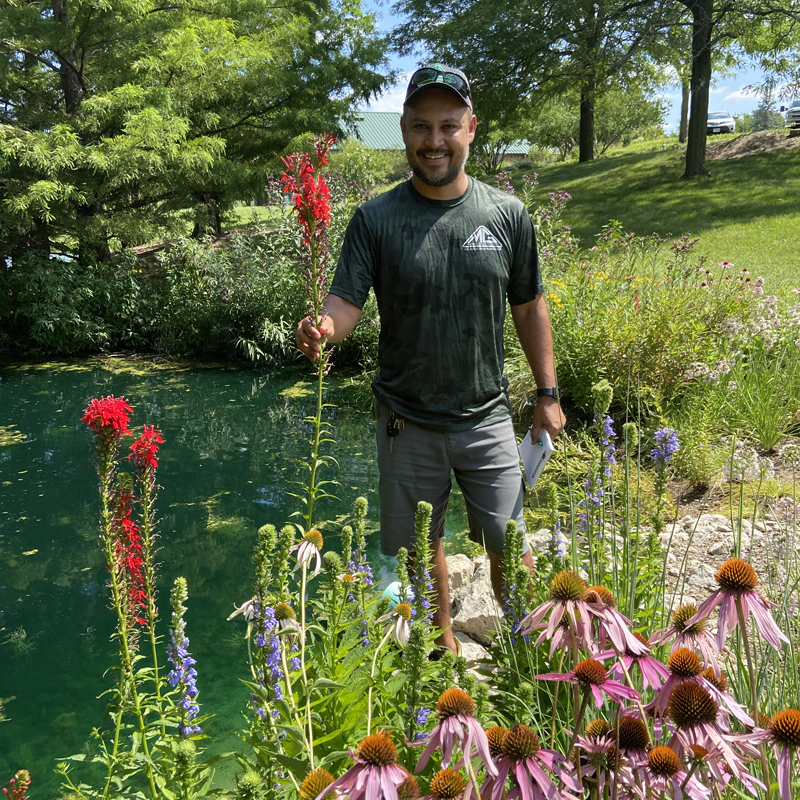
As Production Foreman at the Midwest Natural Garden, Enrique is intimately familiar with native plants and how they perform, but designing this type of planting was a new type of undertaking for him. As he moved forward with planning the design and installation, he viewed it as both a challenge and an experiment. The design’s radius extends 3 to 5 feet from the shoreline with more water-tolerant varieties planted closer to the water’s edge, while those that are more drought-tolerant on the outer edges of the garden. Enrique intentionally chose clumping forming plants to maintain an organized and intentional appearance. This designed approach ensures the native plants blend harmoniously with the surrounding display gardens. Using clump-forming plants means, at least initially, more room for weeds to grow. The garden has been weeded regularly as it becomes established to ensure weeds do not get out of hand while the plants continue to fill in.
Enrique has observed many varieties flourishing. The Symphyotrichum oblongifolium, or Aromatic aster, stand poised to introduce vibrant colors with their purple blooms in the coming months. Rudbeckia fulgida var. speciosa, or Showy Black-eyed Susan, has performed beautifully, bringing bright bursts of gold to the design. Enrique was conservative when planting the Rudbeckia, as he wasn’t sure how large it would get in this environment. Acorus americanus, or Sweet Flag, and Carex frankii, or Bristly Cattail Sedge, have both established quickly with their dense root systems helping to stabilize the soil.
While the planting around the pond has overall proven successful, some plants, like Schizachyrium scoparium, or Little Bluestem, faced difficulties in some parts of the garden while thriving in others. Enrique speculated some of the plugs may not have had enough time to establish their roots before the cooler temperatures set in. The Lythrum alatum, or Winged Loosestrife, also struggled, likely due to the excessively dry summer we have had. Enrique intends to replant the Schizachyrium scoparium and Lythrum alatum in the same areas within the next few weeks and will monitor how they perform in the coming year.
Other winners include varieties well-regarded for planting in wet areas. Sagittaria latifolia, or Broadleaf Arrowhead, is an emergent aquatic plant that is doing exceptionally well. Tolerant of fluctuating water levels and a variety of soils, it has filled in a large area on the east side of the pond, creating a sanctuary for marine life. Lobelia siphilitica, or Great Blue Lobelia, and Mimulus ringens, or Monkey Flower, are both thriving along the pond’s edge. Mimulus ringens is known for tolerating fluctuating water levels and is often used in urban retention ponds that may be associated with poor water quality. Lobelia siphilitica is recognized as one of the few plants that can handle wet clay soils. Iris virginica var. shrevei, or Blueflag Iris has nutrient filtering abilities that make it particularly useful in retention basins and bioswales because of its ability to decontaminate the soil by absorbing and storing harmful pollutants. While poor water quality and wet clay soils are not an issue with this particular planting, it’s a good reminder that native plants serve a purpose that goes far beyond looking pretty.
The strategic plantings work as natural stabilizers along the shoreline, preventing erosion and sediment accumulation. This organic solution showcases the symbiotic relationship between design and nature. While still in its infancy, the pond garden experiment is well on its way to being viewed as a success. As the plants mature, and with Enrique’s continued stewardship, this planting is sure to not only succeed in its aesthetic and functional goals but also as a beacon of a balanced ecosystem.
Back To Blog
